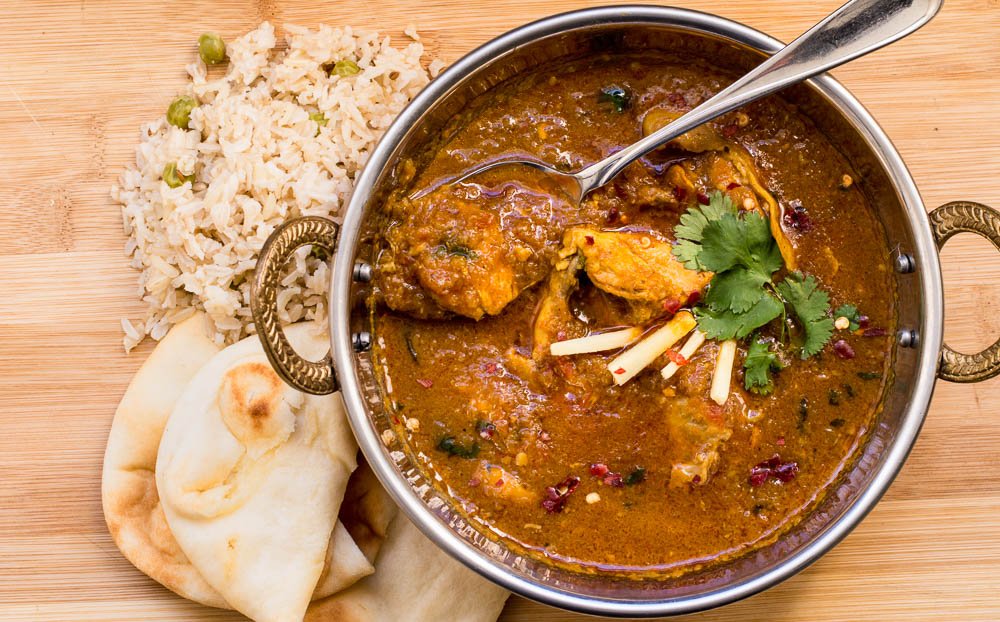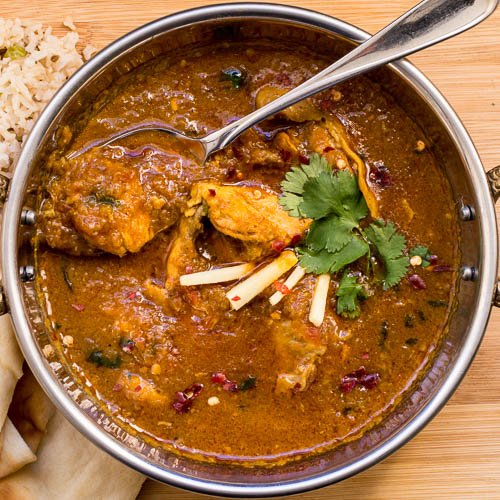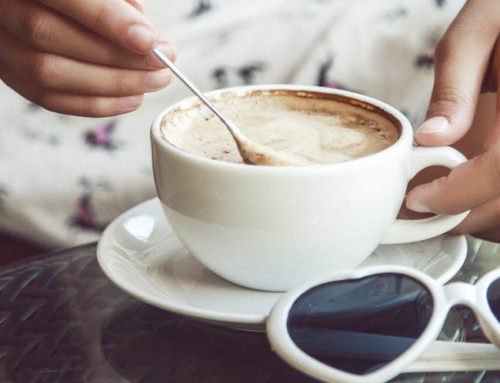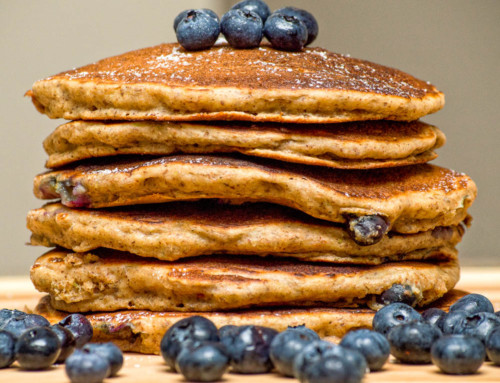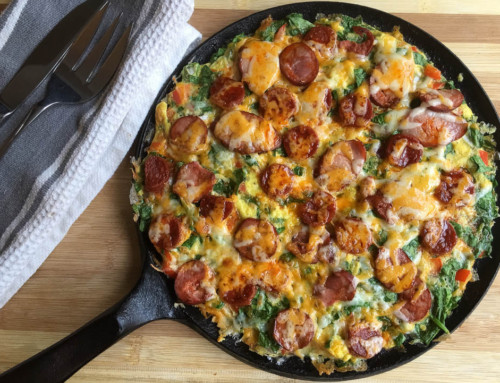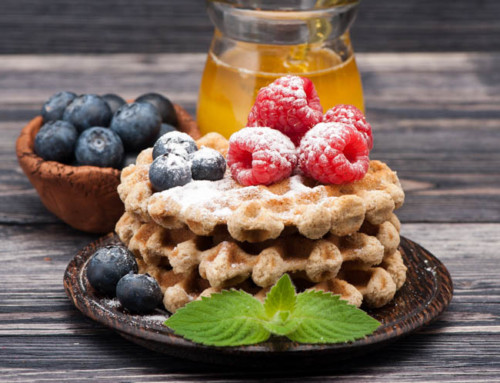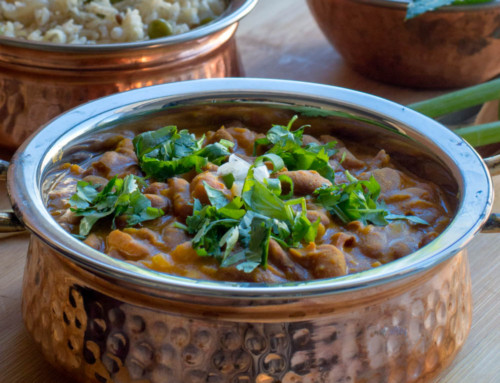This is one of Victor’s favourite dishes. He had his first taste of traditional Indian Chicken Curry in Amritsar, India back in 2008 and could never stop talking about it. Before that, he was hooked on typical restaurant dishes like butter chicken and malai kofta, like many of us. Back in 2008, I was still learning how to cook and could never replicate the same “restaurant” flavours. Now, almost a decade later and with lots of practice cooking I can definitely hold my own in the kitchen.
Restaurants are a good option to get authentic indian flavours but they lack that home-cooking restraint—in terms of added calories from extra butter, cream and often times for cheap flavours miracle whip or mayo (I’m not even sure if they sell miracle whip anymore but I just recently learned this is the goto product for most cheep indian take-outs). Sauces in Jars or pre-packaged curry paste isn’t any better in terms of health benefits. Therefore, when possible it’s best to cook your own curry at home from scratch.
At ScienceandStrength, we believe in eating whole foods, cooked at home. Restaurant outings and take-out are a treat we leave to at most once a week. But, this doesn’t mean we sacrifice flavour and variety by limiting ourselves to broiled chicken breast, broccoli and rice—all though we used to eat like this back in the day to get a 6-pack (it didn’t work for us).
In addition to whole foods, we maximize on functional foods — that contain number of benefits beyond basic nutrition. These benefits include anti-inflammatory, anti-carcinogen, better cardio heath, amongst others. Many herbs and spices along with onions, ginger and garlic have significant healing properties that go beyond just calories and basic nutrients.
Ethnic foods, including many Indian dishes have been created on foundation of these superfoods with the above mentioned properties. The base of majority Indian curries is onion, ginger, garlic, tomato with a variety of dried herbs and spices. This curry base holds true with strong aroma — in a good, explosive flavour kind of way — satisfying the stringiest of palates while forgoing added creams, hydrogenated fats and heavy salt seasoning.
Besides taste, this recipe is packed with protein along with other nutritional benefits from herbs and spices — is a must for any repertoire.
This is a generations old family recipe. My mom is by far one of the best home cooks hands-down and guess what—she’s teaching me how to cook. In the past few years, I’ve been carefully watching her cook and making note of every spice and measuring every amount before she adds it to the pot. Like most home cooks, she doesn’t believe in measurements and over the years I’ve become the same way. The more I cook, the more I can see based on the colour of the curry, and taste how much more I have to cook the tarka (curry base) or even add an extra pinch of a particular spice to produce a winning dish.
However, I still refer to my recipes to refresh my memory and consistently produce a delicious dish. Below is a time and time again, tested and tired, treasured family recipe. Enjoy!
Indian Curry Chicken Recipes — Traditional Punjabi Style
Serves: 3-4 people, 45 minutes to 1 hour prep and cooking time.
1 kg of bone-in chicken pieces of choice
(5-6 chicken thighs skin-on, bone-in work well, you can remove the skin if desired. Cut thighs into long strips, one strip will have the bone attached)
1/2 red bell pepper
1/2 inch piece of ginger (1 tbsp chopped)
3 cloves garlic
1 large tomatoes
1 tbsp tomato paste
1/2 tsp cumin seeds
1 tsp Turmeric powder
1 tsp + 1/2 tsp Garam Masala (store bought or home made mixture of warm spices)
1/4 tsp dry fenugreek leaves (optional, adds dark colour to curry)
1/2 tsp salt to taste
1/4 tsp black pepper to taste
1/4 tsp crushed dry red chilli or cayenne pepper (option for extra spice only)
2 tbs oil
1 tbs butter
Fresh chopped cilantro leaves for garnish.
1.5-2 cups cold tap water to cover the chicken pieces. You can add more or less for desired curry consistency.
———
Wash, clean and cut the chicken thighs into strips or chicken into pieces, set aside. For a lower calorie dish, feel free to remove the skin from the meat but leave the bones-in. Curry develops a deep flavour and colour from the bones. But, most importantly nutrients released from the bones are also good for health—minerals, protein, fats.
In a food processor, medium-fine grate onion, bell pepper, ginger and garlic.
Using heavy bottom pan, heat oil and butter over medium-high heat. Add in the cumin seeds, toast for a minute, until they start to sizzle. Add in the food processor mixture above and stir for 2-3 minutes. Careful as the mixture (tarka) will sizzle and splatter.
Add in the spices: turmeric, garam masala, fenugreek leaves, salt, peppers, and tomato paste. Stir for 1-2 minutes.
In food processor, medium-grate the tomato or finally chop. Add to the turka (carful from the splatter). Cook the mixture for 10-15 minutes on medium-low heat, stirring as needed to prevent mixture from sticking or burning.
Side Note: This is the curry base that will yield the most flavour, consistency and colour. Take your time at this step. Keep on cooking, mixing the tarka until it starts to from a ball and almost separate from the oil. To prevent burning the mixture, you can drop the heat to low as you stir or even remove from the heat for a while.
Add in the chicken pieces and coat them in mixture, 2-3 minutes. Add in the water 1 cup at a time. Cover pot with lid 3/4 of the way, leaving some room for the steam to escape. This will yield a thicker curry as the water evaporates. Cook on medium-low heat and simmer the curry.
Cook until chicken is fully cooked, 20-25 minutes.
Sprinkle with 1/2 tsp garam masala and chopped cilantro leaves.
Serve with Nan bread and/or whole wheat basmati rice pilaff.
Leftovers can be stored in the fridge for a few days. You will notice the fat will start to accumulate on top of the curry, you can skim some of this off or just warm-up the curry in the microwave or stove. If you find the curry has become thick, warm it up on the stove as you add 1/4 cup of hot water to thin it out.
We hoped you enjoyed this article, if so, please share it on your favourite social media so, we can get on google’s radar. Fell free to leave us a comment and start a discussion on the topic.
You may also be interested in learning more about our Books:

